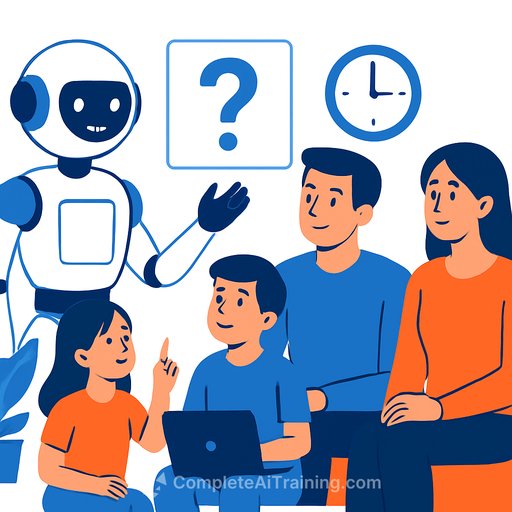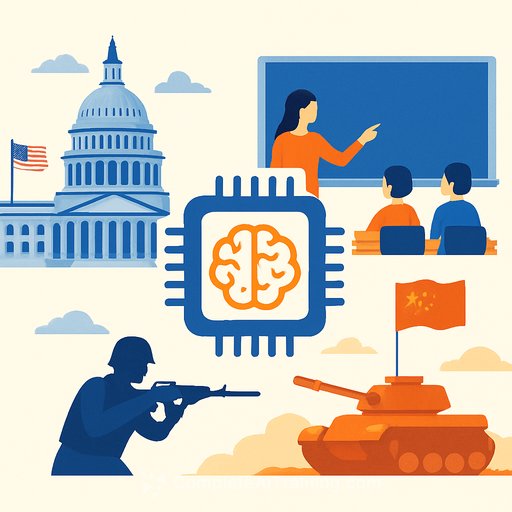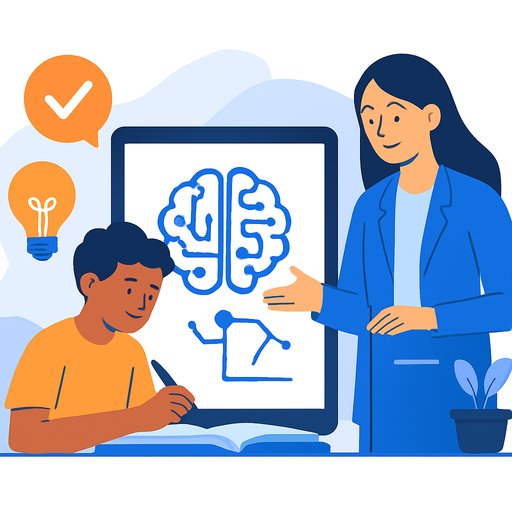Teach kids to use AI safely and smartly
AI tools are now as common as smartphones. For educators and parents, the job is clear: show kids how to use AI for learning while protecting their privacy, well-being, and judgment.
Here's the gap: 78% of children have talked about AI with parents, yet only 34% of those talks cover essentials like accuracy and emotional attachment. Close that gap with clear rules and repeatable classroom practices.
Key takeaways
- Start conversations early: Make AI talks routine and thorough. Cover accuracy checks and emotional attachment, not just "how to use it."
- Build healthy skepticism: 40% of kids report no concerns about following AI advice. Teach them to verify claims before they act.
- Set clear boundaries: No personal info, bring confusing outputs to adults, and use AI as a tool-not a replacement for people.
- Choose safer tools: Prefer kid-focused platforms with parental controls and filtering over open, general chatbots.
AI for kids: what educators should know
58% of kids who use AI chatbots think they give better information than traditional search. That trust is a signal and a risk. Kids need a structure for checking claims, spotting bias, and seeking human help when needed.
AI can boost creativity and help with reading, writing, and problem-solving. It can also serve up outdated facts, biased content, or develop parasocial bonds that pull students away from real relationships. Build safeguards before scale.
Build critical thinking early
Question everything
Normalize asking: "Is this accurate? What evidence backs it up?" Have students highlight claims, list assumptions, and identify what would change their mind. Treat every chatbot answer like a first draft, not the final word.
Explain AI limits
Show that AI predicts likely words based on past data. That data can be incomplete or biased. Use age-appropriate examples to show how results can favor certain views or miss new developments.
Verify sources
- Adopt a rule: confirm important information with at least two reliable, human-authored sources.
- Have students cite those sources and note publication dates.
- Use quick checks: cross-search terms, compare expert sites, and review original data when possible.
For policy context and child-focused guidance, see UNICEF's AI for children recommendations here.
AI rules that protect kids
Set clear boundaries
- No personal details: name, school, address, photos, or location.
- Bring confusing or upsetting responses to a trusted adult.
- AI can draft, brainstorm, and explain-people make decisions.
Choose safer platforms
Pick kid-focused tools (e.g., PinwheelGPT) over general-purpose chatbots. Look for built-in parental controls, content filtering, data privacy settings, and education-first features.
Watch for over-reliance
- Warning signs: preferring AI chats to friends, distress when access is limited, or refusal to attempt work without AI.
- Response: reduce exposure, set time limits, and schedule collaborative, offline activities.
Teach healthy skepticism
Explain that AI can sound confident while being wrong. It can be tuned for engagement, not accuracy. Have students label outputs as "uncertain" until verified.
Emphasize human connection
Reinforce that empathy, context, and ethics come from people. Encourage students to check big decisions with teachers, counselors, and family.
Put the rules to work
Start small
- Launch with supervised prompts: vocabulary building, idea maps, or outlining.
- As students show care and verification habits, grant more independence.
Use technology tools wisely
Parental control and classroom management tools can monitor AI use without heavy surveillance. Products like Panda Dome Family can flag concerns while preserving autonomy.
Turn errors into lessons
- When AI is wrong, pause. Ask: "What went wrong? How can we verify this?"
- Have students rewrite prompts, test sources, and document the fix.
For practical classroom media-literacy tips, see Common Sense Education's guidance for educators.
Quick classroom checklist
- Post AI rules near devices: privacy, verification, ask-for-help.
- Use a "2-source minimum" before accepting facts.
- Require citations and dates for any AI-assisted work.
- Schedule regular debriefs on what AI got right or wrong this week.
- Rotate roles: prompt writer, checker, source-finder, and editor.
Empower students for an AI-heavy future
Your goal isn't to block AI-it's to raise discerning thinkers. With steady conversations, clear rules, and routine verification, students can use these tools for better learning while staying safe and grounded.
If you want structured resources for educator-focused AI skills, explore these options by job role.
Your membership also unlocks:






